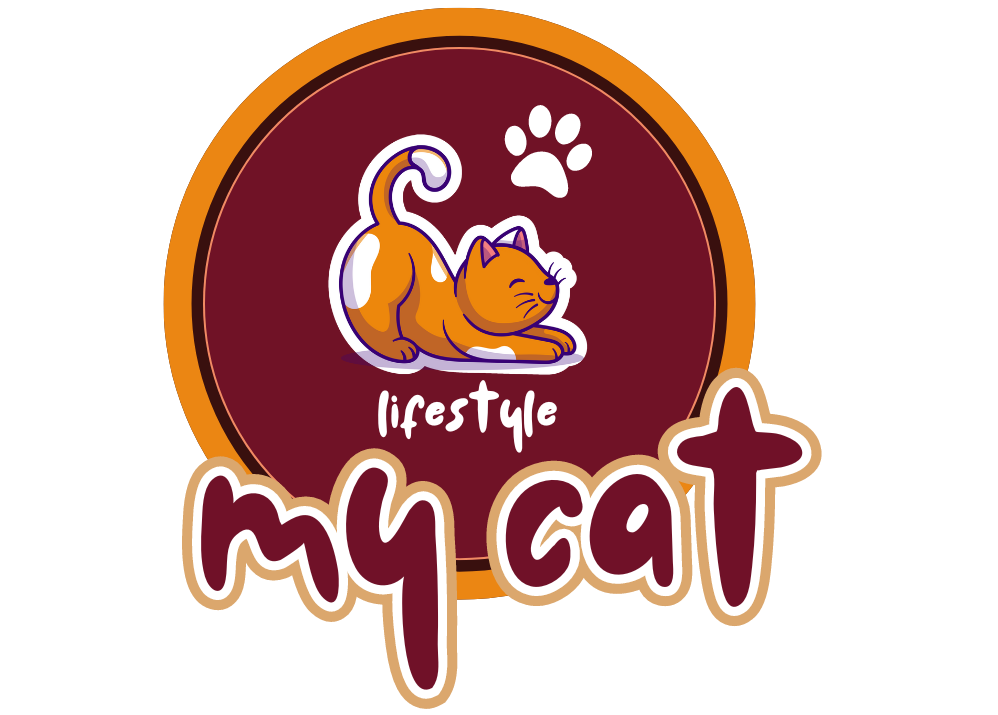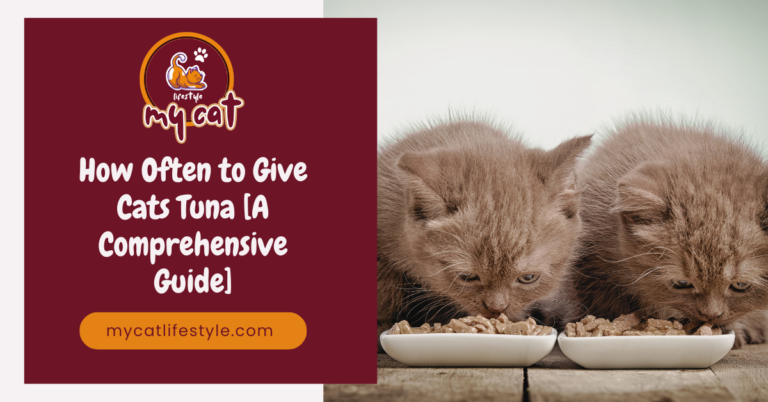How long should a cat wear a cone after neutering or spaying?
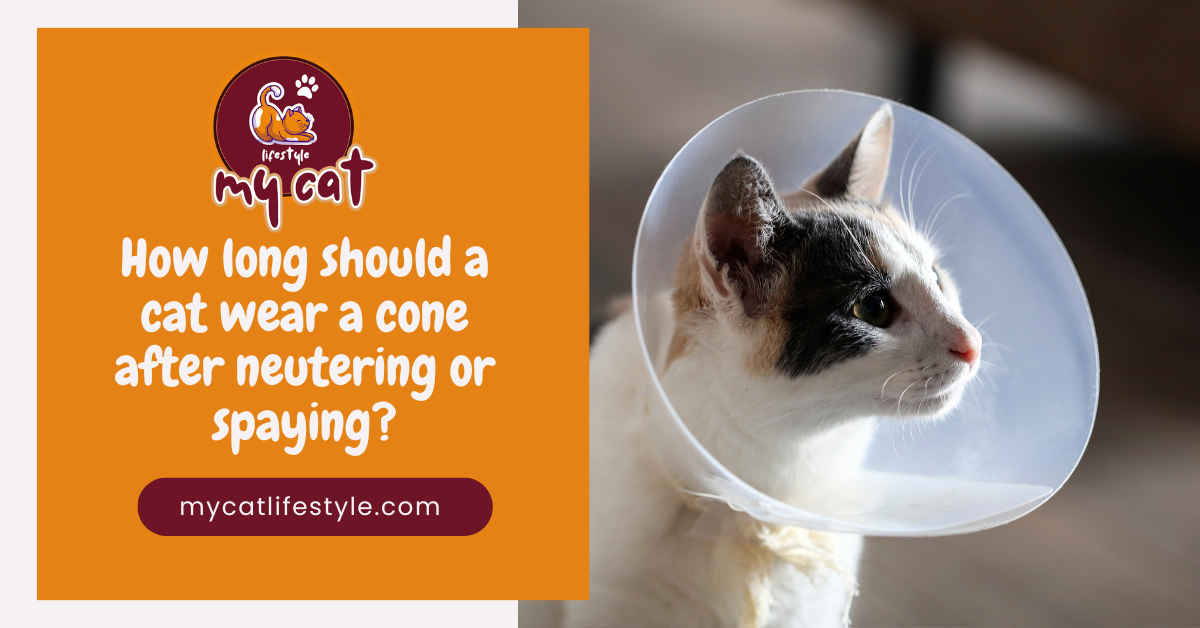
Your cat might need to wear a cone for a period ranging from 5 to 14 days after getting neutered or spayed. Typically, cats are able to be free of the cone in about 5 to 7 days, but it’s usually safer to keep it on for 14 days.
The main reason for the cone is to stop your cat from licking its surgical spot. This might be a bit uncomfortable for your pet, but it’s crucial for avoiding any infection risks. So, what exactly is this “cone of shame”? How do you find the right one for your cat? How can you make wearing the cone less of a hassle for both your cat and you? Keep reading as we discuss how to pick the ideal cone and provide the care your cat needs afterward.
How long should a cat wear a cone after neutering or spaying?
After your cat has been neutered or spayed, figuring out how long they need to wear their cone is crucial for their recovery. Generally, the cone should stay on for about 7 to 14 days. The exact duration depends on the type of surgery your cat underwent.
How Long Should My Cat Wear a Cone After Neutering?
Neutering can be done in one of two main ways, depending on whether your cat’s testicles have descended properly. The simpler method involves a single incision in the scrotum to remove the testicles. This approach usually allows for a quicker healing process, meaning the cone may only be necessary for about 5 to 7 days.
In this method, the vet accesses and then ties off the testicles before removing them through the scrotal incision. Often, this incision is left to heal naturally without stitches, or it’s closed up with a special tissue glue.
If your cat’s testicles haven’t descended as expected, the vet will need to make additional incisions. This might involve cutting into the abdomen, which requires a more complicated procedure. These incisions are typically closed with sutures, either of the kind that dissolves over time or the kind that needs to be taken out by the vet later.
For these more complex surgeries, your cat will likely need to wear the cone for a longer period, usually around 10 to 14 days, to ensure proper healing and prevent them from interfering with the surgery site.
How Long Should My Cat Wear a Cone After Spay?
After your cat undergoes a spaying procedure, which involves the removal of their ovaries and uterus to avoid pregnancy, they’ll need a bit of extra care. The operation involves a small cut made by the veterinarian in the cat’s lower belly to take out the reproductive organs.
To close this opening, the vet stitches it up with multiple layers of stitching material. These stitches on the skin typically get taken out by the vet within 7 to 10 days. To help your cat heal properly and to prevent them from licking or biting at the stitches, it’s important for them to wear a protective cone around their neck for about 10 to 14 days post-operation.
What to Expect After Surgery
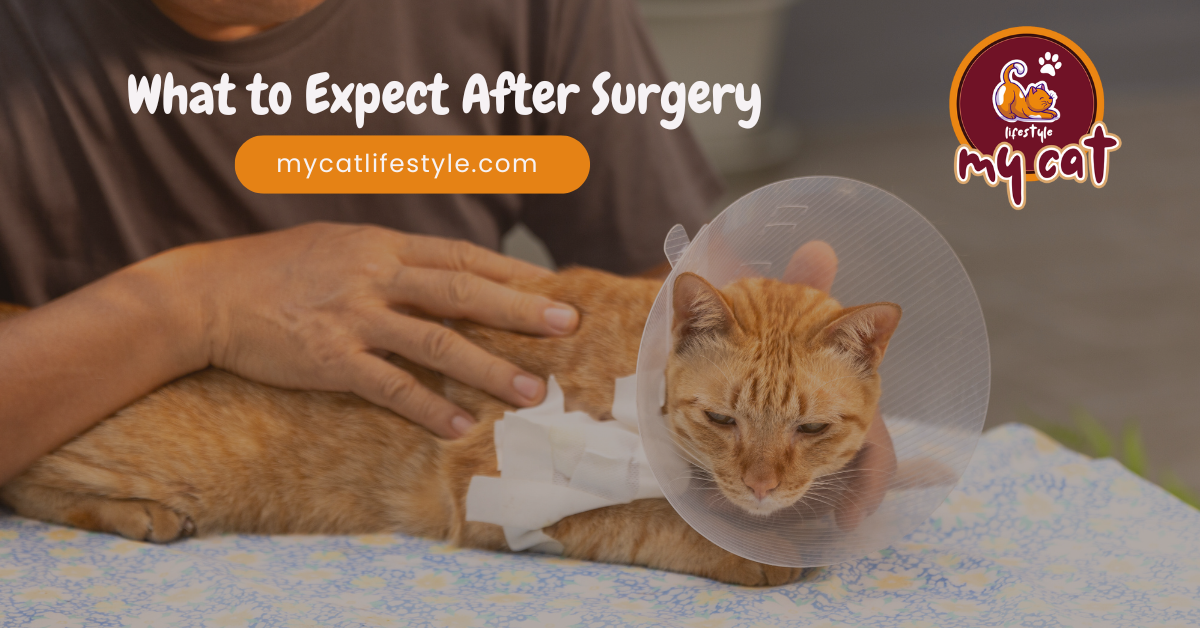
Spay and neuter operations, while commonly performed, are significant surgical procedures. The recovery process involves several important steps beyond just wearing a cone. Initially, it’s crucial to limit your cat’s physical activity. Since they’re given sedatives for the operation and pain relief medication to take home, their awareness of pain is diminished, increasing the risk of accidental injury.
Throughout the entire recovery period, restrict your pet’s movements. While light movement is fine, vigorous activities like jumping or stretching could lead to stitches coming loose, necessitating another visit to the vet. For situations where you can’t keep an eye on your furry friend, consider confining them to a small room or a carrier in the initial days post-operation.
Veterinarians recommend keeping cats indoors while they recover. Neutered males, after a straightforward procedure, may venture outside for brief periods 24-48 hours post-surgery. However, both genders with abdominal incisions should remain indoors for at least a week or until the incision has fully healed.
Watch the Wound
Monitoring the healing process of your cat’s surgical incision is vital. Initially, the incision should appear straight, closed, and slightly pink around the edges.
Some minor swelling and bruising are normal, and the area should look pink but not excessively swollen. Should you observe significant swelling, pus, discharge, or feel heat emanating from the incision site, it’s imperative to contact your veterinarian as these could be signs of infection.
Also, reach out to your vet if the wound reopens, especially if it was sealed with stitches or surgical glue. Once healed, the wound will be closed, potentially without stitches, and while it may still appear pink, it should not be red, bleeding, or discharging. This indicates a successful recovery.
Average Length of Time Cats Wear Cones After Neutering
| Type of Surgery | Average Length of Time Wearing Cone |
| Spaying | 7-10 days |
| Neutering | 5-7 days |
| Other procedures (e.g. dental cleaning, tumor removal) | Varies based on the complexity and invasiveness of the procedure |
Average Length of Time Cats Wear Cones After Neutering
Can I Take My Cat’s Cone Off After 7 Days?
Typically, the cone is recommended to stay on for two weeks following your cat’s surgery to ensure a smooth and safe recovery. However, for less invasive surgeries where the healing process is quicker, you might be able to remove your cat’s cone after just one week, but only after getting the green light from your vet.
For straightforward neutering procedures, the healing timeline is often between 5 to 7 days. If your vet agrees, the cone can be removed once this period has passed. Yet, if your cat has undergone abdominal surgery, the healing process tends to extend to 10-14 days. In such cases, it’s wise to keep the cone on for the full 14 days for optimal healing.
When Can I Take the Cone Off My Cat After Neutering or Spaying?
Cats generally need to wear a cone for 10 to 14 days post-neutering to allow the scrotal incision to heal properly. The initial period might be slightly uncomfortable for your pet, but the cone plays a crucial role in preventing self-inflicted harm, ensuring a healthy recovery in the long run.
If your cat seems excessively troubled by the cone or struggles to adapt, consult your veterinarian for advice. There are more comfortable alternatives that might be suitable for your pet.
How To Determine When It’s Time To Remove The Cone After Neutering
Understanding when it’s safe to remove your cat’s cone after neutering involves observing a few critical signs, indicating your cat is ready for the cone to be removed. These signs help ensure the surgical site is healing properly without interference.
Signs that a cat is ready to have their e-collar removed
No longer trying to lick or scratch at the surgical site
The cone’s purpose is to prevent your cat from tampering with the healing wound. When your cat stops attempting to lick or scratch at this area, it’s a strong indication they might be ready to go without the cone.
No longer exhibiting discomfort or pain
Initially, if your cat seems in pain or discomfort, the cone helps by preventing self-inflicted harm to the healing area. However, if your cat appears more comfortable and shows no signs of discomfort, it might be time to consider removing the cone.
Incision appears fully healed
The condition of the surgical incision is a critical indicator. If the site looks fully healed—meaning it’s closed, without redness, swelling, signs of infection, or other complications—it’s likely safe to remove the cone.
Observing these signs closely will guide you in making an informed decision about when to remove your cat’s cone, ensuring their recovery process continues smoothly and safely.
Importance of Consulting with the Veterinarian:
Though observing your cat for the signs mentioned earlier can guide you towards understanding when it might be appropriate to remove the cone, it’s crucial to involve your veterinarian in this decision. They possess the expertise to evaluate your cat’s recovery accurately and can offer personalized advice on when removing the cone won’t jeopardize the healing process.
Your veterinarian’s role is to monitor the healing journey closely and advise you on the best course of action for your cat’s health and well-being.
Veterinarian Dr. Jessica Vogelsang emphasizes the importance of this professional guidance, stating, “Always touch base with your veterinarian before deciding to remove the cone. They’re in the best position to judge the healing status and will help ensure your cat transitions out of the cone smoothly and safely.”
This advice underscores the critical role veterinarians play in your pet’s post-operative care, highlighting the need for their approval before making any changes to your cat’s recovery plan.
Is It Safe To Leave Your Cat Alone With The Cone?
Leaving your cat unattended while they’re wearing a cone is generally not recommended. The initial adjustment period to the cone can be uncomfortable for cats, potentially causing them to become agitated or restless. The design of the cone, while necessary for healing, unfortunately reduces a cat’s peripheral vision. This limitation can increase their risk of mishaps around the house.
For cats that are especially lively and love to explore every nook and cranny, the cone adds a layer of risk. It can get caught or snagged in tight spaces, such as between furniture, in cabinet doors, or near windows.
It’s crucial to keep your cat indoors while they’re wearing the cone and until they have fully recovered. Outdoor environments can pose additional risks and challenges for a cat wearing a cone, from getting it caught on objects to potentially more severe accidents.
Can a Cat Sleep with a Cone On?
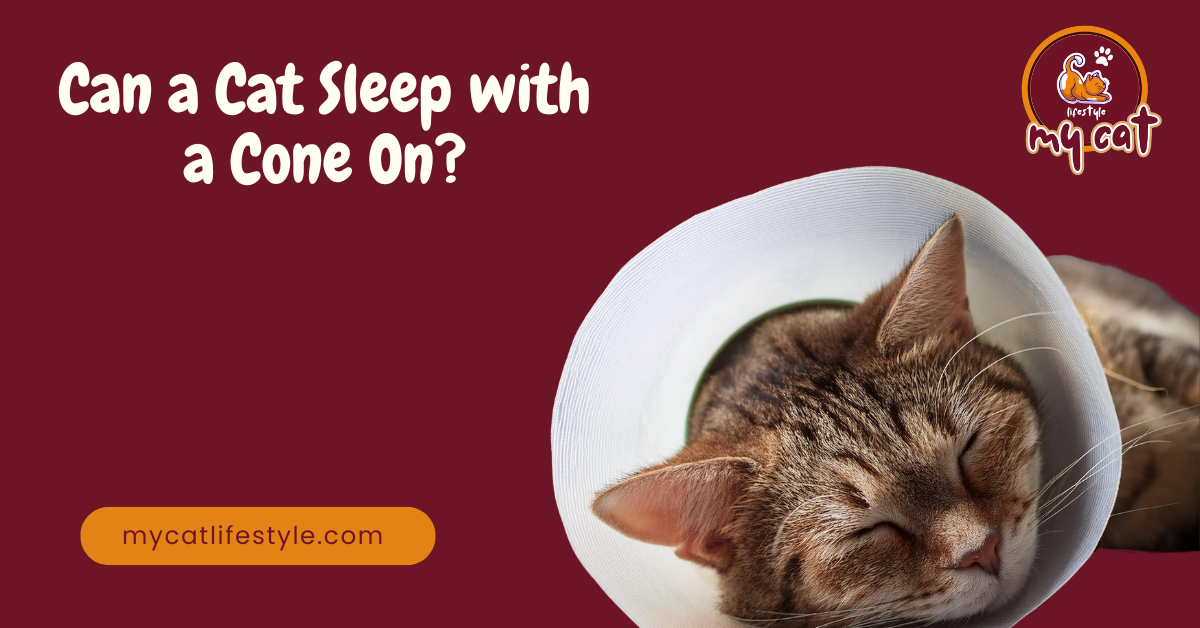
Absolutely. Your vet will likely advise that it’s crucial for your cat to keep the cone on, even while sleeping. This prevents them from potentially licking or biting at their incision site upon waking.
Concerns about whether the cone might disrupt your cat’s sleep are understandable, but thankfully, cones are designed with a cat’s comfort in mind. They are typically made from a soft material that allows your cat to rest comfortably.
How to Feed a Cat Wearing a Cone?
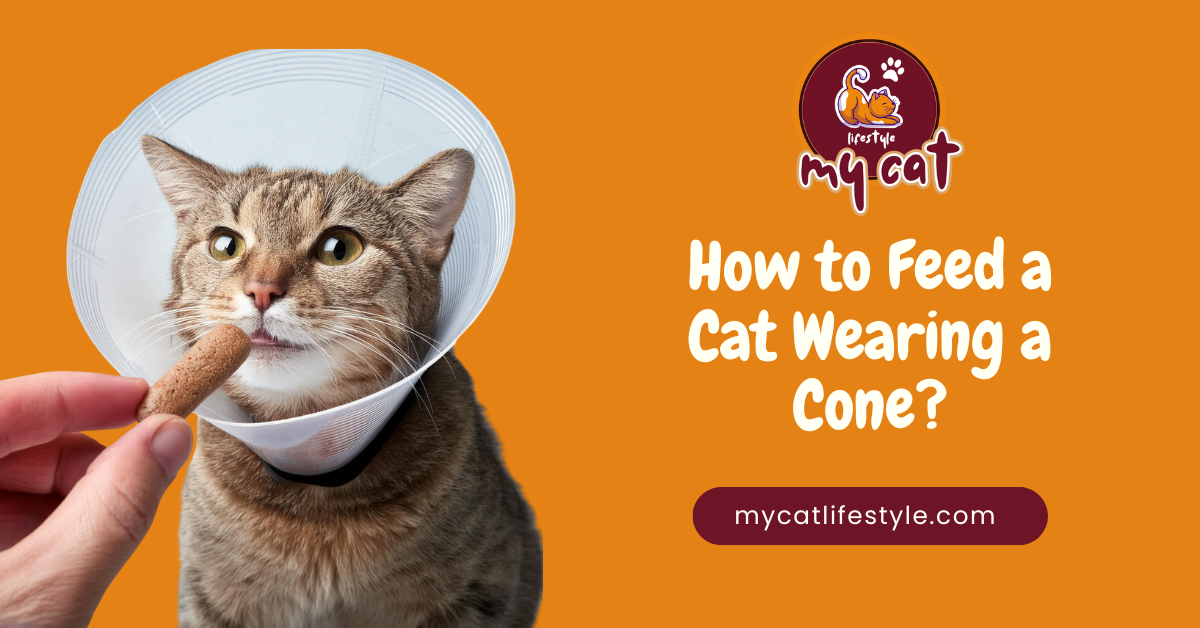
It’s true that some cats adjust quickly to eating and drinking with a cone, while others might find it challenging. If your cat is having trouble, here are a couple of strategies to help:
Elevating Food and Water Bowls
Lifting the bowls a few inches off the ground can make a big difference. This can be achieved with simple household items like an inverted bowl for a makeshift stand, a block of wood, or even a folded towel.
Switching to a Saucer
A flat saucer can sometimes be easier for your cat to access food and water from, compared to a bowl with taller sides. For water, just ensure you’re refilling the saucer with small amounts more frequently. Since this setup can be a bit messy, placing a mat or towel under the saucer will help keep the feeding area clean.
What Kind Of Cone Should You Take For Your Cat?
- Choosing the right cone for your cat involves finding a balance between a secure fit and comfort.
- The cone should sit comfortably around your cat’s neck, neither too tight nor too loose.
- Ideally, you should be able to slide one to two fingers between the cone and your cat’s neck, ensuring it’s snug without being restrictive.
- It’s also important to ensure that the cone doesn’t press into your cat’s neck or have sharp edges that could cause discomfort.
- The cone’s length should extend just beyond your cat’s nose, depending on which part of their body needs to be protected, to prevent them from reaching the healing area while still allowing them enough freedom to be comfortable.
Things To Keep In Mind While Choosing A Collar
Size Selecting the right size is crucial. A collar that’s too big might easily come off, while one that’s too small could be uncomfortable or harmful to your cat. Always measure your cat’s neck before buying a collar to ensure a good fit. You should be able to slide two fingers between the collar and your cat’s neck comfortably.
Material
The collar’s fabric matters a lot. Aim for something durable yet gentle, like soft plastic or foam, which won’t irritate your cat’s skin. Steer clear of any materials that are stiff or abrasive.
Ease of Use
Opt for a collar that’s straightforward to put on and remove. Features like Velcro fastenings or quick-release clips make life easier and safer for both you and your pet.
Length of Wear
Think about how long your cat will need to keep the collar on. For longer periods, it’s best to choose a design that’s specifically made for comfort to avoid any chafing or discomfort.
Consult with the Veterinarian
Getting advice from your vet is always a smart move when picking out a collar. They can offer tailored advice based on your cat’s health, size, and any specific needs they might have.
How Should a Cone Fit a Cat?
A cone that fits well should be tight enough around your cat’s neck to stay in place but not so tight that it’s uncomfortable. You should be able to slide one or two fingers under the cone but ensure it’s secure enough to prevent your cat from taking it off.
The cone shouldn’t press uncomfortably against your cat’s neck. It needs to be long enough to go just past your cat’s nose, effectively blocking access to the area you’re protecting, such as the site of a recent operation. For procedures like neutering or spaying, where you’re guarding the lower belly or scrotal area, a longer cone may be necessary due to cats’ impressive flexibility, which allows them to reach almost any part of their body.
How Could Your Cat React To The Cone Around Its Neck?
Cats typically don’t enjoy wearing cones and might take some time to adjust. Initially, your cat might find the cone irritating and show reluctance to wear it.
Despite the cone’s design to permit normal activities like eating, drinking, and using the litter box, your cat might act out. Some cats may sulk, appearing to be embarrassed, or bump into furniture and walls as they adjust to the extra bulk around their head. Your cat might also engage in dramatic behaviors, pretending it can’t eat or drink with the cone or frantically attempting to pull it off. They might become more active in their displeasure, knocking things over as a form of protest.
These actions are often ways for your cat to express dissatisfaction with the cone, hoping to earn your sympathy and get the cone removed. However, it’s important to stand firm in your decision for the health and safety of your pet. Securing the cone properly, either by attaching it to a collar or creating a makeshift harness with gauze bandage, ensures your cat can’t reach the healing surgical area without unduly limiting their normal movements or comfort.
Do Cats Get Depressed Wearing a Cone?
Indeed, some cats may experience depression when wearing a cone. According to reports from 67% of cat owners, their feline friends were unable to engage in play due to the cone. While activity restriction post-surgery is necessary, it could contribute to their low mood. The stress caused by the cone might also heighten the risk of depression.
Signs of Depression in Cats
It’s crucial to recognize the signs of depression in cats, especially if you suspect the cone might be affecting their well-being. Consider that some behavioral shifts are normal as they recover from surgery. Here are indicators to watch for:
Vocal Changes
Observe if your cat’s meows sound distressed, or if there’s a noticeable change in their vocalization patterns. A typically vocal cat becoming quiet, or a quiet cat getting louder, can signal discomfort.
Body Language
Depressed cats might press their ears close to their head or keep their tails low. Fear might cause their fur to bristle.
Personality Shifts
Be alert to any changes in their behavior. Depression may lead them to hide more, show disinterest in play, or seek an unusual amount of attention.
Scratching Habits
Uncharacteristic scratching of objects or excessive scratching might be a cat’s way of coping with stress.
Changes in Appetite and Sleep
A decrease in appetite or an increase in sleep duration could indicate depression. Recognizing these signs early and consulting with a veterinarian can ensure your cat receives the care and support needed during their recovery.
Alternatives You Could Use Other Than A Cone
If your cat struggles with the traditional hard plastic cone, here are six comfortable alternatives to consider:
Soft E-Collar
These e-collars, made from soft foam, offer a gentler alternative to the stiff plastic cone, reducing discomfort and allowing for better visibility and mobility. However, their flexibility means they might not deter the most persistent of wound-lickers.
Pillow Collars
Shaped like a pillow and designed to wrap around your cat’s neck, these collars provide comfort without obstructing vision, making rest easier. But, for cats insistent on reaching their wounds, pillow collars might not offer sufficient protection
Cloth Cones
Fabric versions of the traditional cone, cloth cones are softer and lighter but may not effectively prevent a determined cat from accessing their wound. They’re best suited for cats less inclined to lick or nibble at their healing sites.
Neck Control Collar
This option involves a wide, padded collar that limits neck movement without affecting the cat’s ability to see or move around. While it avoids the discomfort of hard cones, it’s not the most comfortable choice due to the neck movement restriction.
Baby Clothes, DIY Surgical Shirt, or Cat Onesie
For a no-cone solution, consider dressing your cat in baby clothes, a homemade surgical shirt, or a cat onesie. These create a physical barrier over the wound but beware of persistent lickers or nibblers, as they might just soak the fabric, defeating the purpose.
Each alternative has its pros and cons, so consider your cat’s temperament, the wound’s location, and healing stage when choosing the best option.
Inflatable E-Collars
Offering a balance between comfort and protection, inflatable e-collars are a lightweight choice that doesn’t limit your cat’s daily activities, such as sleeping, eating, drinking, or moving around freely. They resemble the neck pillows used on flights, supporting your cat’s neck comfortably.
The primary drawback of these collars is their limited ability to prevent a determined cat from reaching their wounds, as their flexibility might not offer the same level of restriction as more rigid options.
Why My Vet Didn’t Give Cone After Neutering Cat
Your vet might have decided against providing a cone for your cat post-neutering for several reasons, concluding that it wasn’t essential for your pet’s healing process. The decision can depend on various factors, such as the surgery’s specifics, where the incision is located, how your cat typically behaves and its level of activity, and the overall risk of the wound getting infected.
Following your vet’s advice on how to care for your cat post-operation is crucial, even if it doesn’t involve using a cone.Should you find yourself with doubts or questions regarding your cat’s post-surgery care, reaching out to your veterinarian for guidance is always the best course of action.
Frequently Asked Questions
Can Your Cat Sleep With A Cone On?
Yes, cats can indeed sleep while wearing a cone. Initially, it may seem a bit uncomfortable for them, but they generally adjust to it with time.
When Can You Take the E-Collar Off Your Cat?
The e-collar should remain on until the wound has fully healed. For surgeries like spaying, this means the collar should not be removed for about 10 to 14 days. Always adhere to your veterinarian’s specific recommendations.
What Materials Are Used for Cat Cones?
Cat cones are available in a variety of materials. These range from shaded to clear plastic, from rigid to soft plastic, and may include features like Velcro strips for a customizable fit or pre-cut sizes that can be easily assembled.
References
- https://www.ncbi.nlm.nih.gov/pmc/articles/PMC7070745/
- https://www.petmd.com/cat/general-health/cat-neutering-aftercare-everything-you-need-know
- https://vetmed.tamu.edu/news/pet-talk/pets-after-surgery/
